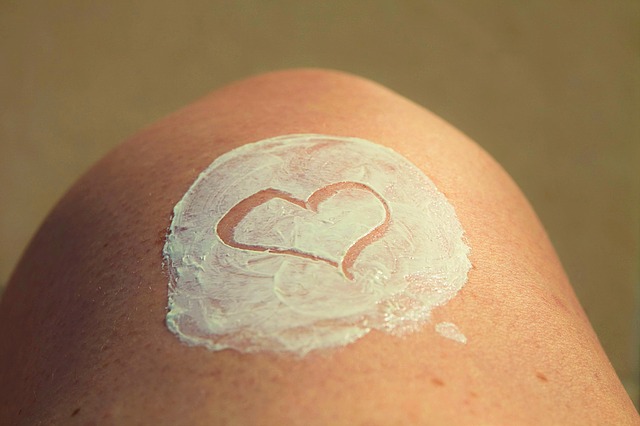During the summertime, sunscreen becomes a part of the daily routine. Sunscreen often found in the form of a lotion, foam, or spray works to protect the human skin from harmful effects of sun exposure, such as sunburns. While the sun provides vitamin D for the skin, exposure to ultraviolet rays of the sun can have a negative impact on human skin. The skin is composed of three main layers: epidermis, dermis, and hypodermis. The outermost layer, the epidermis, contains melanin to protect the skin from ultraviolet light. These rays can damage skin cells and reduce elasticity of the skin, which encourages rapid aging, wrinkles, and reddened skin. It is clear that sunscreen is crucial for adequate skincare.
What is SPF?
There are a variety of sunscreens currently available on the market, with ranging SPFs. SPF, or the sun protection factor, is a numeric measurement of the amount of time it will take for ultraviolet rays of the sun to affect the skin after application of the product, relative to no product use. For example, a sunscreen with an SPF of 60 indicates that once that sunscreen is applied, it will take 60 more minutes for the sun to potentially cause damage to the skin than the amount of time it would take if the product was not used. While higher SPF sunscreens are intended to be more protective than lower SPF sunscreens, research has shown that individuals who use higher SPF sunscreens will spend more time in the sun and reapply less often. Dermatologists recommend reapplying sunscreen approximately every two hours while outdoors.
What does broad spectrum mean?
The colour of light is determined by its wavelength. There is a full electromagnetic spectrum of varying wavelengths, and visible light is only a portion of that spectrum. The section of the spectrum that is important in terms of skin damage is ultraviolet light. Ultraviolet, or UV light, ranges from 10 nanometers to 400 nanometers. The ultraviolet rays of the sun that penetrate the earth’s atmosphere are divided into two categories: UVA and UVB. Exposure to UVA rays can cause aging and wrinkles as they are able to travel deep within the layers of the skin. Exposure to UVB rays normally leads to sunburns. Both types of rays are responsible for the development of malignant and benign skin cancers. Generally, most sunscreens provide strong protection from UVB rays however, they are not always effective in protecting from UVA rays. Sunscreen products that are labeled as “broad-spectrum” indicate that those products offer proportional protection from UVA rays in relation to the protection from UVB rays. The FDA has developed a test that if passed, allows the product to be listed as a broad-spectrum sunscreen.
Types of Sunscreen
-
Mineral Sunscreen
Mineral sunscreen is also often referred to as physical sunscreen. This type of sunscreen protects the skin by building a layer on top of the skin to reflect the rays of the sun. This reflective layer is developed using minerals such as zinc oxide and titanium dioxide. As there are individuals with many different skin types, physical or mineral sunscreen is a safe option, particularly for sensitive skin. It is moisturizing and causes less skin irritation. Due to its properties and mechanism, this type of sunscreen traditionally does not blend well, causing an effect on the appearance of the skin. To address this issue, recent mineral sunscreen products have added colour and matte characteristics for an improved appearance when applied.
-
Chemical Sunscreen
Chemical sunscreen, unlike mineral sunscreen does not sit on the skin. Rather, it enters into the epidermis and absorbs ultraviolet rays of light from the sun that are exposed to the skin. Certain chemicals in the sunscreen such as oxybenzone, avobenzone, and octinoxate are responsible for converting the absorbed ultraviolet rays to heat. The heat is then released from the body. Dermatologists recommend a chemical sunscreen to individuals who are involved in physical activity or produce excessive sweat during the time of exposure to the sun. This type of sunscreen is also beneficial for those who are swimming or exposed to water due its water-resistant properties.
The skin is the largest organ in the human body and due to its anatomical location, it is important to protect the skin from environmental factors such as heavy sun exposure. Sunscreen is a vital tool for skincare, and it is important to understand how sunscreen works, the mechanisms and properties of various types of sunscreens with differing SPF levels and broad-spectrum characteristics.
Written by Shrishti Ahuja, MSc
References:
Center for Drug Evaluation and Research. (n.d.). Questions and Answers: FDA announces new requirements for over-the-counter (OTC) sunscreen products marketed in the U.S.: FDA.
Harvey, D. (n.d.). The difference between physical and chemical sunscreen.
Vorvick, L. J. (2019, September 11). Sun’s effect on skin – Health Video: MedlinePlus Medical Encyclopedia.
Wang, S. Q. (2019, August 19). Ask the Expert: Does a High SPF Protect My Skin Better?
What is the difference between UVA and UVB rays? (2018, October 9).
Image by chezbeate from Pixabay



